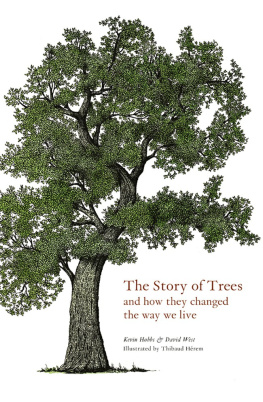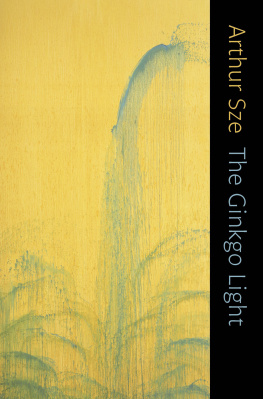Ginkgo Biloba
Stephan Brown
The mission of Storey Publishing is to serve our customers by
publishing practical information that encourages
personal independence in harmony with the environment.
Edited by Jeane Ledoux
Cover illustration by Laura Tedeschi
Cover design by Carol J. Jessop (Black Trout Design)
Text illustrations by Beverly Duncan and Laura Tedeschi
Text production by Nancy Ringer
Copyright 2000 by Storey Publishing, LLC
All rights reserved. No part of this bulletin may be reproduced without written permission from the publisher, except by a reviewer who may quote brief passages or reproduce illustrations in a review with appropriate credits; nor may any part of this bulletin be reproduced, stored in a retrieval system, or transmitted in any form or by any means electronic, mechanical, photocopying, recording, or other without written permission from the publisher.
The information in this bulletin is true and complete to the best of our knowledge. All recommendations are made without guarantee on the part of the author or Storey Publishing. The author and publisher disclaim any liability in connection with the use of this information. For additional information please contact Storey Publishing, 210 MASS MoCA Way, North Adams, MA 01247.
Storey books and bulletins are available for special premium and promotional uses and for customized editions. For further information, please call 1-800-793-9396.
Printed in the United States
Library of Congress Cataloging-in-Publication Data
Brown, Stephan, 1945.
Ginkgo biloba / Stephan Brown.
p. cm. (A Storey country wisdom bulletin; A-231)
Includes bibliographical references.
ISBN 1-58017-280-6 (pbk. : alk. paper)
1. GinkgoTherapeutic use. I. Title. II. Series.
RM666.G489 B76 2000
615.3257dc21
00-050959
For my son, Corey, my great joy, from his nuts n twigs dad.
CONTENTS
Introduction
The ancient and venerable ginkgo tree (Ginkgo biloba) is the oldest tree species on planet Earth. Its fossil records go back a staggering 200 million years! Ginkgo stood tall as dinosaurs brushed past, and pterodactyls may have lunched on lizards sheltering in its leafy arms. With its unique, fan-shaped leaves; silvery gray bark; and strange, sometimes random branching pattern, ginkgo is particularly memorable among the worlds great trees.
But ginkgo is more than a tree. Because of its great age in the unimaginable spectrum of geologic time, ginkgo epitomizes persistence fighting the odds and surviving. It offers a model of stamina and endurance for us to aspire to through the difficult challenges that are encountered in this life. As a medicinal herb, ginkgo is best known for its improvement of short-term memory, but it is also effective in treating allergies, depression, poor circulation, and many more conditions. What a magical tree!
The Native American people sought wisdom from and sometimes would wrap their arms around the largest tree they could find, believing that those of great age also had great knowledge and spiritual strength. I have said countless times, You can hug a tree or you can hug a ginkgo! With its amazing history, would not ginkgo, of all the trees on earth, be the most knowledgeable and most powerful? I believe that ginkgo is both the teacher and the protector of all the other plants on earth.
Why Is Ginkgo So Popular?
Ginkgo is revered by gardeners as an ornamental tree, and it is also one of the most popular and widely researched medicinal herbs in the world. Extracts of the leaves seem to have a somewhat unique ability to facilitate the bodys peripheral circulation and the micro-circulation to the brain, including the ocular area. It is thus quite useful in helping those with cold hands and feet, certain neuropathies, poor short-term memory, poor removal of natural metabolic wastes, and any condition associated with cerebral ischemia (a lack of oxygen and glucose in the brain). Increased cerebral circulation enables the blood to bring more oxygen and glucose to the brain and to carry away the metabolic wastes that would poison the brain if not promptly removed.
In other ways (the technicalities of which are more adequately described in other sources), ginkgo has a tonifying, or invigorating, effect upon the central nervous system. It is useful in conditions of age-related cognitive decline (dementia), poor memory, and decreased learning abilities. Ginkgo has also proved beneficial in cases of head injury, early Alzheimers disease, stroke, impaired hearing, tinnitus, eye problems, depression, allergies, intermittent claudication (achy legs), and cellular damage from free-radical oxygen molecules.
With all its many applications, ginkgo causes only rare instances of adverse reactions or side effects. Usually an upset stomach is the only complaint. Its no wonder that ginkgo is such a popular herb!

The ginkgo tree has distinctively large, leathery, fan-shaped leaves.
A Love for Ginkgo Is Born
I am a self-admitted ginkgo fanatic. My love affair with ginkgo trees began back in 1973. After five years of mowing lawns and performing basic landscaping services, I used $3,000 of my own money, some money I borrowed from my family, and a second mortgage to purchase land that soon became my own plant nursery in Brewster, Massachusetts, on the Cape Cod peninsula.
I became a regular customer of the large wholesale nurseries in Newport, Rhode Island. I would drive my old pickup truck and homemade trailer the two hours from Brewster to Newport to pick up stock. Most of the nurserymen in that area were Dutch. They had immigrated in the early part of the century and began to ply the trade that they knew best: growing ornamental plants. Being young, energetic, and insatiably curious, I barraged the old Dutchmen the Hoogendoorns, Kempenaars, Vander Pols, and Vaniceks with questions about raising, feeding, pruning, and propagating these newfound plant friends of mine.
One day I was looking through the rows of plants at Hoogendoorns nursery the junipers, rhododendrons, lilacs, and others when suddenly, there in front of me were three or four trees the likes of which I had never before seen. They captured my complete attention. They were strange, beautiful, and totally unique with their fanlike leaves, a silvery bark that was ridged yet smooth, almost horizontal branches, and leathery-textured leaves. Looking more closely at a leaf, I saw that the veining started at the petiole and radiated straight out to the edge of the leaf.
George! I gasped in amazement to my horticulturalist host. What is this? Ive never seen anything like it before!
Thats a ginkgo, he offered back. Its the oldest tree on earth. Dinosaurs were around when this tree was growing.
Thus began my obsession with the fascinating ginkgo. For many years, I seemed to enjoy this passion alone, as few other people were interested in the ginkgo as an ornamental tree. More recently, as the interest in medicinal plants has skyrocketed, more and more people have read the influx of scientific data confirming ginkgos health benefits and are now seeking it out. Today I sell thousands of these beautiful trees to people all over the country, and I always include a plethora of serious prose and puckish poetry with each shipment.
Confessions of a Ginkgo Fanatic
Driven by my ginkgo passion, in 1999 I journeyed to the opposite side of the earth, to China, where the oldest ginkgo trees on earth grow. My pilgrimage brought me to three ancient ginkgo trees an hours drive from Nanjing, China.







